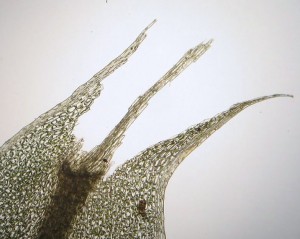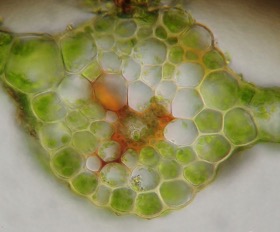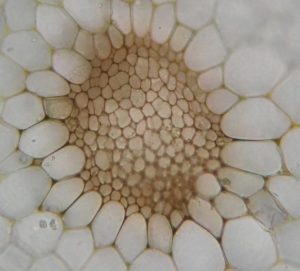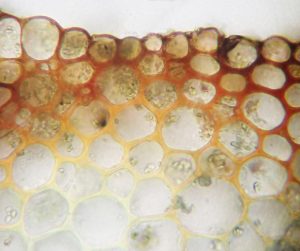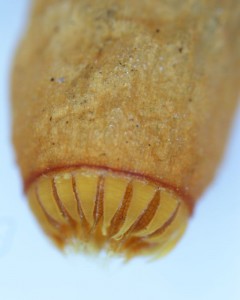Habitat
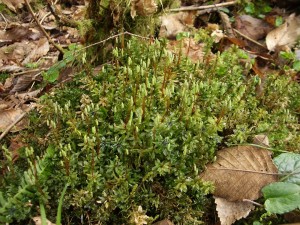 Plagiomnium insigne can commonly be found growing in humid coastal forests on rotten logs and tree trunks. Additionally, Plagiomnium insigne may be located in swampy areas, alluvial sites, shaded banks, or lawns.
Plagiomnium insigne can commonly be found growing in humid coastal forests on rotten logs and tree trunks. Additionally, Plagiomnium insigne may be located in swampy areas, alluvial sites, shaded banks, or lawns.
Gametophyte
Overall Structure:
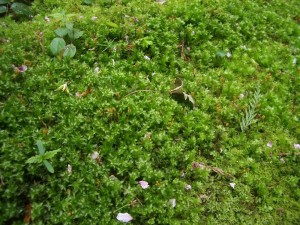 Plagiomnium insigne exhibits an acrocarpous growth form. The shoots form loose, tall green turfs. This is the largest of Plagiomnium species in British Columbia.
Plagiomnium insigne exhibits an acrocarpous growth form. The shoots form loose, tall green turfs. This is the largest of Plagiomnium species in British Columbia.
Leaf Structure:
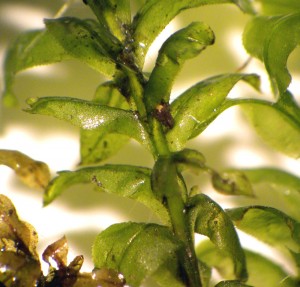 The leaves are strongly contorted when dry. To avoid desiccation in other species the leaves pull up against the stem, aiding in water retention. Plagiomnium insigne typically grows in shaded and moist areas, thus does not require such an adaptation. In this photo the shoot is moist.
The leaves are strongly contorted when dry. To avoid desiccation in other species the leaves pull up against the stem, aiding in water retention. Plagiomnium insigne typically grows in shaded and moist areas, thus does not require such an adaptation. In this photo the shoot is moist.
The leaves are decurrent: both sides of the leaf base extend down along the stem. 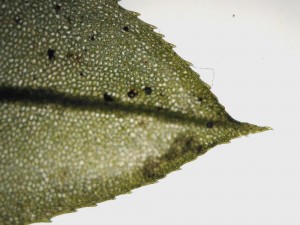
The apex of the leaf is acutely pointed, and the costa has elongate cells. 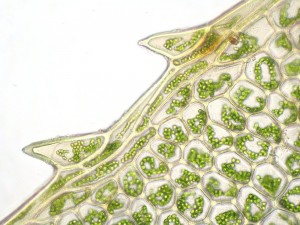
The margin cells are elongate and form single teeth. The laminar cells are rounded.
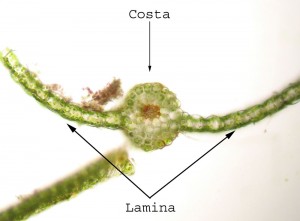 The lamina is unistratose, while the costa is multistratose.
The lamina is unistratose, while the costa is multistratose.
The costa has a central conducting strand, surrounded by stereid (thick-walled cells and then larger parenchymal cells.
Stem:
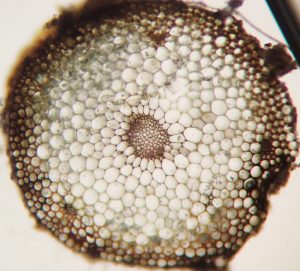 The stem has a wide cortex with a central conducting strand composed of hydroids.
The stem has a wide cortex with a central conducting strand composed of hydroids.
Close up of the central strand
Outer cells of the stem – note the thick-walled stereids
Rhizoids:
The rhizoids are dark brown, and uniseriate with oblique crosswalls. Rhizoids do not contain chloroplasts.
Male Gametophyte:
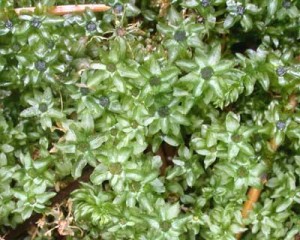 The male gametophytes are easily recognizable by the rosette of leaves surrounding the apex of each shoot.
The male gametophytes are easily recognizable by the rosette of leaves surrounding the apex of each shoot. 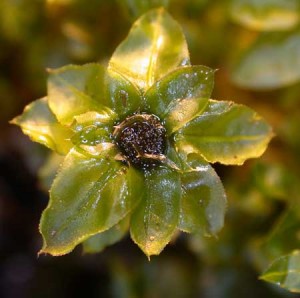
The apex of the gametophyte, containing antheridia and paraphyses is surrounded by perigonial leaves. All together, these structures constitute the perigonial head. This arrangement allows for a splash cup mechanism of sperm dispersal. 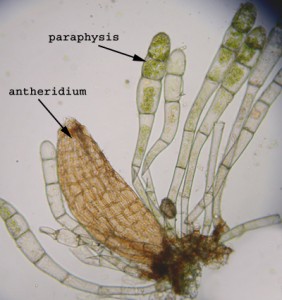
The antheridia are sac-like and contain sperm. The paraphyses are contain chloroplasts, are uniseriate, and sterile.
Sporophyte
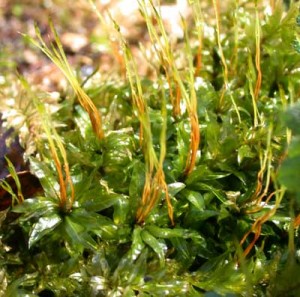 Sporophytes generally mature in the spring. Multiple sporophytes may arise from a single shoot of a female plant.
Sporophytes generally mature in the spring. Multiple sporophytes may arise from a single shoot of a female plant.
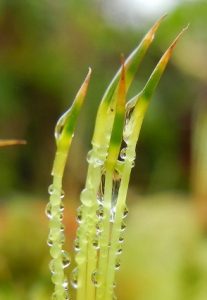
The seta elongates prior to sporangium development. Here you can see the calyptae on top of the undeveloped sporangium,
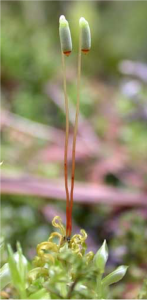
Sporangium:
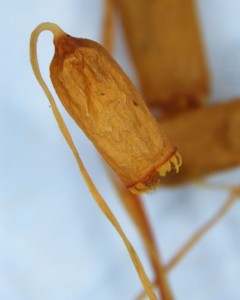 When fully mature, the relatively large sporangia are brownish and nodding.
When fully mature, the relatively large sporangia are brownish and nodding.
Seta:
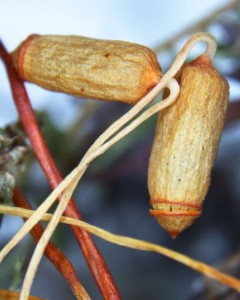 The mature setae are bent at their apices so the sporangia appear nodding.
The mature setae are bent at their apices so the sporangia appear nodding.

